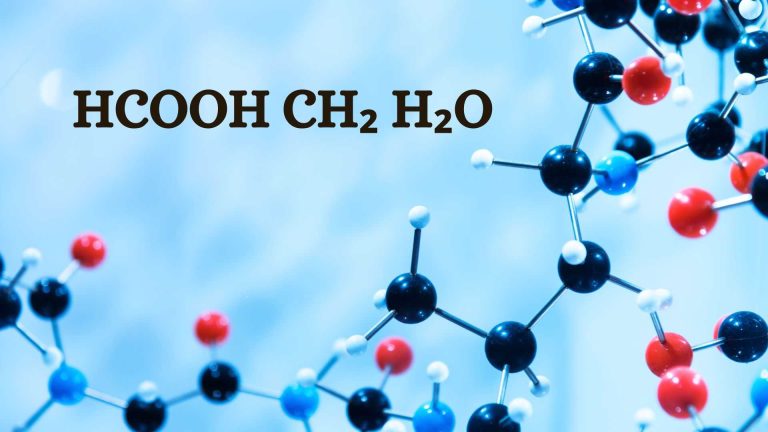Understanding HCOOCH₃ + H₂O: Reaction, Importance, And Applications
In chemistry, even the simplest-looking formulas represent meaningful interactions. One such example is the reaction between methyl formate (HCOOCH₃) and water (H₂O). This reaction is a great demonstration of ester hydrolysis, a process that plays a central role in both organic chemistry and industrial manufacturing.
Methyl formate, a colorless liquid with a sweet odor, is a commonly used ester in labs and chemical industries. Its chemical formula is HCOOCH₃, where the molecule consists of a formate group (HCOO) attached to a methyl group (CH₃). When mixed with water, methyl formate undergoes hydrolysis, a reaction in which the ester bond is broken down by water molecules.
The chemical equation for this reaction is:
HCOOCH₃ + H₂O → HCOOH + CH₃OH
This means that when methyl formate reacts with water, it produces two important compounds: formic acid (HCOOH) and methanol (CH₃OH). This reaction is not only simple but also showcases the concept of nucleophilic substitution, where water acts as the attacking molecule (nucleophile) that breaks the ester bond.
To speed up the hydrolysis, an acid catalyst is often added. This catalyst helps activate the ester by making it more susceptible to water attack. Under such conditions, the reaction proceeds smoothly and yields formic acid and methanol in good amounts.
Why This Reaction Matters
The hydrolysis of HCOOCH₃ using water has practical significance beyond textbooks. It is a key step in the industrial production of formic acid and methanol, both of which are used in many sectors.
Formic acid is used in leather tanning, textile dyeing, and as a preservative in animal feed.
Methanol is an important solvent, fuel additive, and is used in the production of plastics, formaldehyde, and other chemicals.
This reaction is also a model process for teaching students about reaction mechanisms, bond breaking, and chemical equilibrium. It helps illustrate how temperature, catalysts, and water availability affect the rate and outcome of a reaction.
Safety and Handling
While the reaction itself is straightforward, the chemicals involved need to be handled with care:
Methyl formate is flammable and may irritate the eyes and respiratory system.
Formic acid is corrosive and can cause skin burns.
Methanol is toxic if inhaled or ingested.
Proper lab practices, including the use of gloves, goggles, and ventilation, are essential when conducting this reaction.
Conclusion
The interaction between HCOOCH₃ and H₂O may appear simple, but it offers valuable insight into how esters behave in aqueous environments. Whether in a chemistry classroom or in large-scale manufacturing, this reaction continues to play an important role in modern science and industry.
